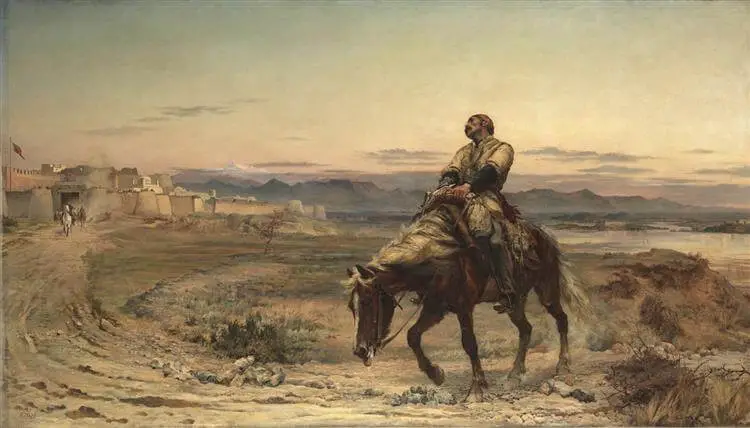Title of Artwork: “The remnants of an army, Jellalabad, January 13, 1842”

Artwork by Elizabeth Thompson
Year Created 1879
Summary of The remnants of an army, Jellalabad, January 13, 1842
The Remnants of an Army, Jellalabad (sic), January 13, 1842 is an oil-on-canvas work by Elizabeth Thompson, Lady Butler, completed in 1879. It shows William Brydon, an assistant surgeon in the Bengal Army, arriving at Jalalabad’s gates in January 1842. Jalalabad’s walls rise over a desolate plain, as riders from the garrison speed from the gate to reach the lone man bearing the first word of the destiny of the “Army of Afghanistan.”
All About The remnants of an army, Jellalabad, January 13, 1842
According to legend, Brydon was the last survivor of the nearly 16,000 soldiers and camp followers that fled Kabul during the First Anglo-Afghan War in 1842, and he is pictured toiling the last few miles to safety on an emaciated and dying horse. In truth, a few more Army stragglers ultimately arrived, and greater numbers were later released or rescued after being held captive by Afghan forces.
The picture was completed during the Second Anglo-Afghan War. Lady Butler was gaining a reputation for her military paintings after the success of her earlier piece The Roll Call of 1874, which depicted a scene from the Crimean War. It is 132.1 centimetres (52.0 in) by 233.7 centimetres (92.0 in) in size.
Remnants of an Army was shown in the Royal Academy Summer Exhibition in 1879, and was purchased by Sir Henry Tate, who donated it to the Tate Gallery in 1897. The Tate Gallery still owns it, however it is on long-term loan to the Somerset Military Museum as part of a permanent exhibition: the 13th (1st Somersetshire) Regiment (Light Infantry) was involved in the First Anglo-Afghan War and marched to Jalalabad in late 1841.
























